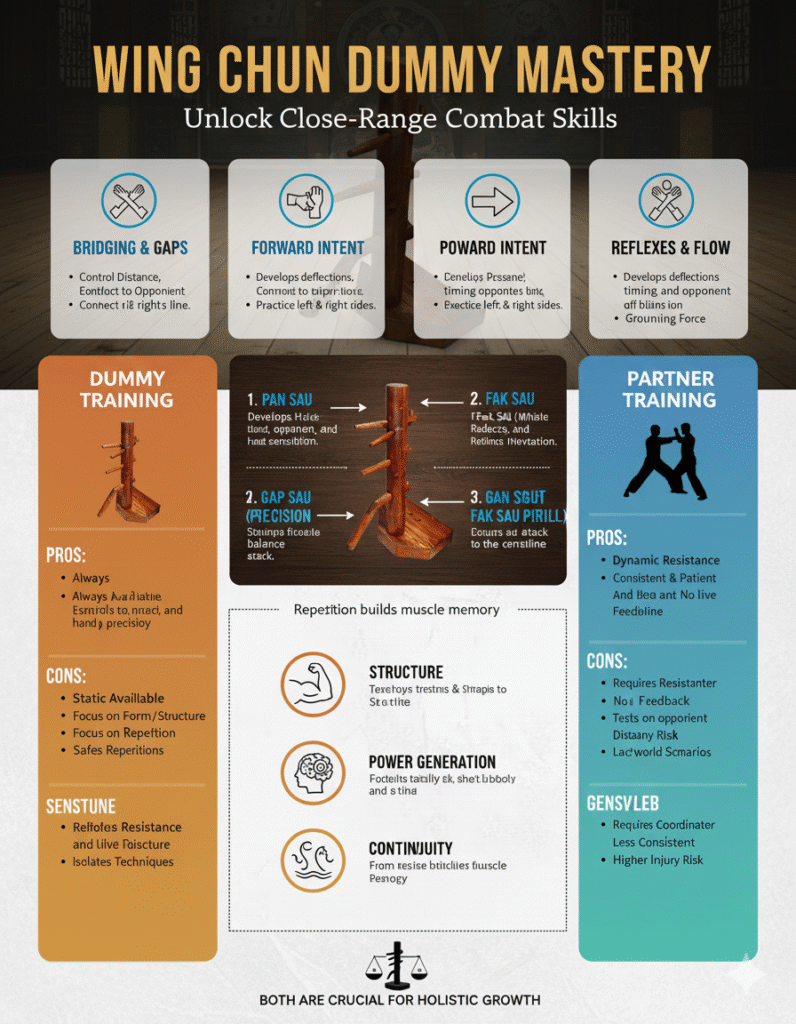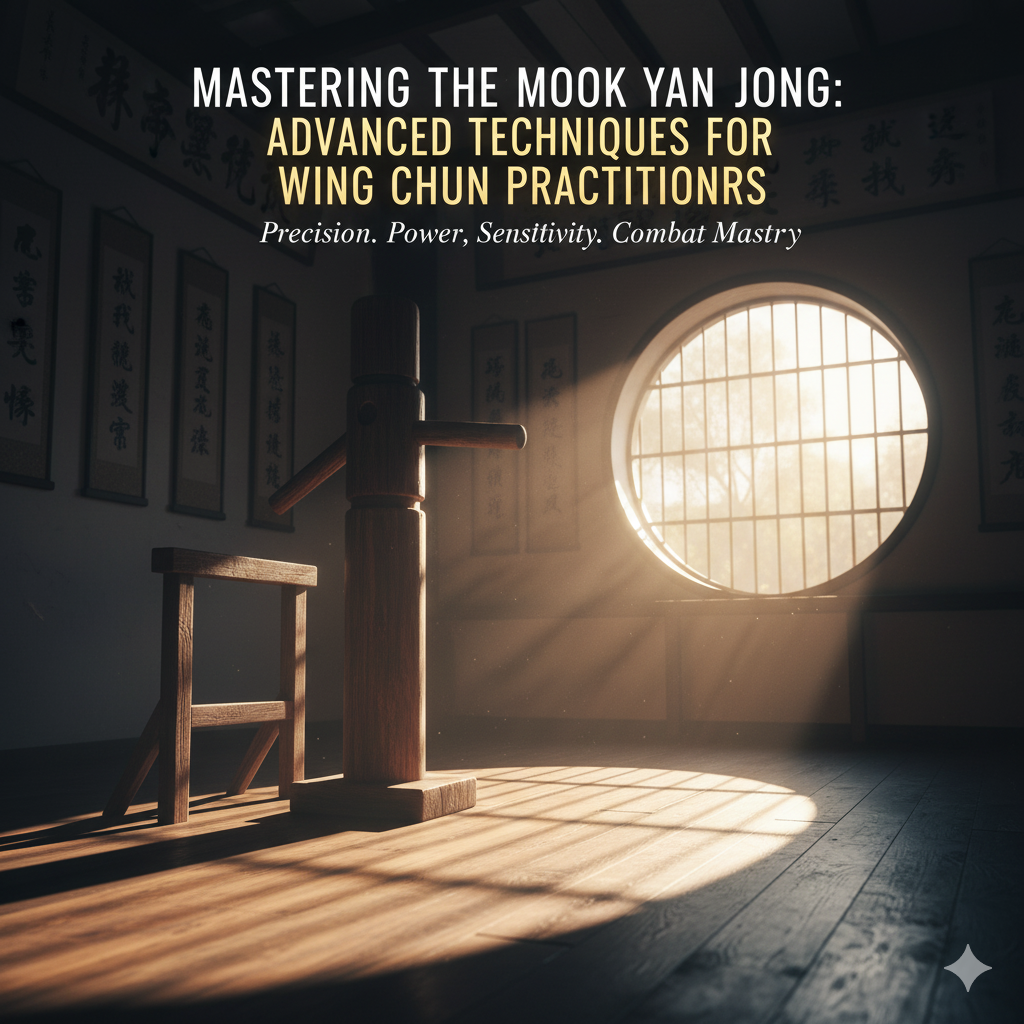Have you ever wondered how martial arts masters seem to effortlessly redirect an opponent’s attack?
A significant part of that skill comes from countless hours of dedicated training, and for Wing Chun practitioners, a key partner in this journey is the wooden dummy, or Muk Yan Jong.
But the wooden dummy is so much more than a static piece of wood.
It’s a sophisticated training apparatus that, when used correctly, can teach you to simulate and manipulate an opponent’s energy,
transforming your practice from a series of movements into a dynamic and responsive art form.

The Misconception of the Wooden Dummy
Many people new to Wing Chun see the wooden dummy as a simple striking post.
They approach it with the intention of hitting it hard, believing that this will build power and condition their arms.
However, this is a fundamental misunderstanding of the dummy’s purpose.
As one Wing Chun Sifu explains, using “hand energy” to strike the dummy is the wrong approach.
The goal isn’t to use brute force against the wood, but to treat the dummy as a “fake enemy” and learn to use “soft energy to overcome the hard energy” [2].
What is “Opponent’s Energy”?
In martial arts, “energy” refers to the force and momentum of an opponent’s attack.
Simulating this energy in your training is crucial for developing the ability to react effectively in a real-world self-defense situation.
The wooden dummy, with its fixed arms and leg, provides a constant and unyielding source of this simulated energy.
The structure of the dummy is designed to mimic an opponent’s limbs, with the ends of the arms representing the elbows [1].
This allows you to practice maintaining the correct distance and angles, which are essential for controlling an opponent.
How the Wooden Dummy Teaches You to Flow
The key to simulating and working with an opponent’s energy is to learn how to flow with it, rather than meeting it with direct force.
The wooden dummy teaches this through its unyielding nature.
If you try to force a technique against the dummy, you will meet with solid resistance.
This immediate feedback forces you to find a more efficient way to move.
This is where the concept of “Juen Ma,” or turning the body, comes into play.
By using your entire body structure and a solid stance to turn, you can redirect the dummy’s simulated force without relying on muscular strength.
The loud clacking sound you hear during a well-executed wooden dummy form is not the result of hitting the wood hard, but of this efficient transfer of energy through your entire body.
Benefits of Training with the Wooden Dummy
By training with the wooden dummy and focusing on simulating your opponent’s energy, you will develop a range of skills that are essential for any martial artist:
Technique Refinement: The dummy provides immediate feedback on the precision and effectiveness of your techniques [1].
Spatial Awareness: You learn to navigate around an opponent and exploit openings effectively [1].
Coordination and Timing: The structured practice on the dummy improves your coordination and timing, which are essential for executing techniques fluidly and responsively [1].
Internal Strength: The solid resistance of the dummy helps you cultivate internal strength and structure, which are essential for delivering powerful and controlled techniques [1].
Conclusion
The wooden dummy is a powerful tool for any martial artist who wants to develop a deeper understanding of how to work with an opponent’s energy.
By moving beyond the idea of simply hitting the dummy and instead focusing on flowing with its simulated force, you can unlock a new level of skill and understanding in your practice.
Remember, the goal is not to fight the dummy, but to dance with it.
In doing so, you will learn to dance with your opponent, effortlessly redirecting their energy and controlling the flow of the fight.
References
[1] Elemental Combat Arts. (2024, June 13). *Wooden Dummy in Wing Chun: Techniques, Benefits, and Philosophy*. Retrieved from
[2] Learn Wing Chun Online – Dragon Sifu. (2023, October 8). *How to use the right Wing Chun Wooden Dummy energy?* [Video]. YouTube. Retrieved from


